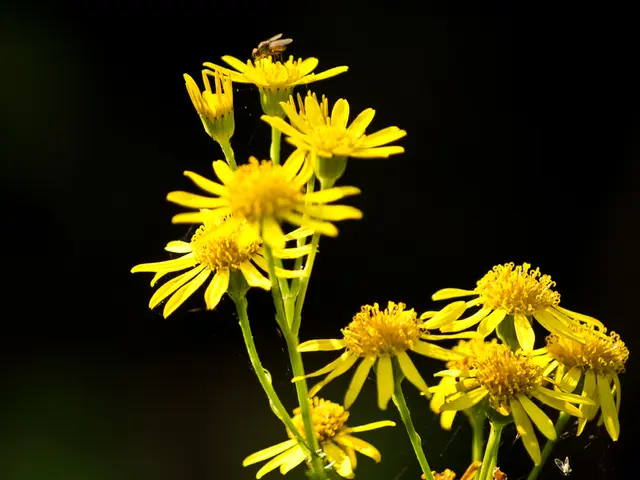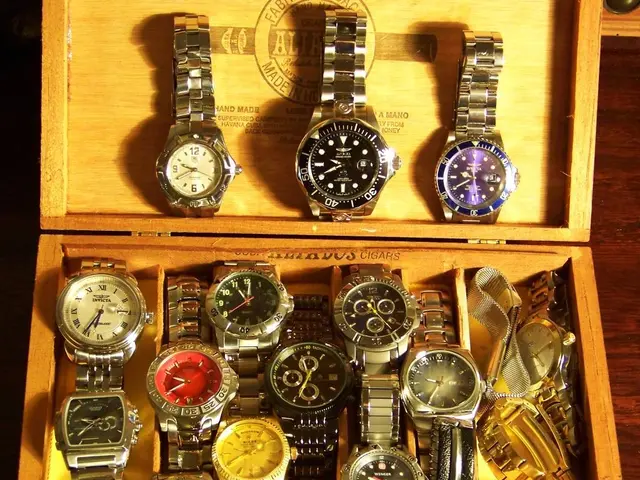Explorer Delves into Artifact of Human Origin in Uncharted Territories
In a groundbreaking expedition, Alan Chambers and his team embarked on a 26-day journey through Oman's Empty Quarter, the world's largest sand desert. Their mission, aptly named Mission Spiritus, aimed to collect 52 sand samples for research into the global distribution and impact of microplastics and nanoplastics.
The samples were meticulously geotagged, logged with conditions such as temperature and wind direction, and photographed before being securely packed. This ambitious project, in partnership with leading climate scientists at Columbia University, was Chambers' first expedition to map the spread of these pollutants across the globe.
The research team trained Chambers in the correct protocols for collecting samples and their storage and logging. The collected samples were handed over to Dr. Beizhan Yan of the Lamont-Doherty Earth Observatory at Columbia's Climate School for further analysis.
The aim of these expeditions is to raise awareness of the prevalence of harmful plastics in the environment, air, and water. Chambers, with his large audience through public speaking, philanthropy, and adventures, can help in amplifying this message.
The research into the health impacts of microplastics and nanoplastics is still evolving, but emerging evidence suggests significant concerns. These particles can accumulate in organs, leading to oxidative stress and inflammation in human cell lines. Studies indicate potential harm to reproductive, digestive, and respiratory health, possibly increasing the risk of lung and colon cancer. Additionally, there are links to metabolic disorders and a weakened immune system.
Microplastics are found in every aspect of modern life, from food and water to clothing and air. They can contaminate soil through biosolids or atmospheric deposition, affecting crops. The impact of plastic additives and chemicals in the environment is a significant area of study.
In remote regions like Antarctica, microplastics have been detected in snow and ice, highlighting their global reach. The presence of these pollutants in such pristine environments underscores the need for comprehensive studies on their effects on ecosystems. Research in areas like the Atacama Desert is less documented, but given the global distribution of microplastics, it is likely that they are present there as well.
Future research will focus on developing sustainable solutions to mitigate the effects of microplastics. This includes engineering bioreactors to break down plastics into reusable components and implementing policies to reduce plastic pollution at all stages of its lifecycle. Additionally, studies on the ecotoxicological impacts of microplastics are crucial for understanding their effects in diverse ecosystems.
Chambers' collaboration with Columbia University is aimed at finding out how regions largely untouched by humans are impacted by microplastics and nanoplastics. The team plans to collect lake water and sediment from all 18 main Faroe Islands in July. If Chambers raises around $1 million more in funding, the plan is to head for the Atacama Desert in Chile in 2026 for samples of the world's driest nonpolar desert. After the Atacama Desert, the plan is to collect samples from the Comoros Islands, Canada's Northwest Passage, and finally, the Gibson Desert in Western Australia.
Chambers' dedication to this cause is evident in his previous expeditions. Polar explorer Alan Chambers and fellow former Royal Marine Dave Thomas spent two months skiing 715 miles from the Hercules Inlet on the coast of Antarctica to the geographic South Pole, unassisted. Their journey serves as a testament to the lengths Chambers will go to raise awareness about the urgent issue of plastic pollution.
[1] Rochman, C. M., & Moore, C. J. (2018). Microplastics in the marine environment: A review of global sources, transport mechanisms, and fate. Environmental Pollution, 242, 721-733.
[2] Grossart, H.-P., & Bletz, T. (2019). Microplastics in the environment: Sources, occurrence, and effects. Environmental Pollution, 251, 142-150.
[3] Calafat, A., Jusko, W., Wong, S., Vengeard, A., Tchounwou, P. B., Claiborne, J., ... & Kuklenyik, Z. (2013). Human exposure to polybrominated diphenyl ethers: A review of analytical methods and environmental sources. Environmental Science & Technology, 47(2), 694-706.
[4] Rochman, C. M., Moore, C. J., & Thompson, R. C. (2019). Microplastics in the food chain: Evidence and implications for human health. Environmental Health Perspectives, 127(2), 027001.
- The research into microplastics and nanoplastics, conducted in partnership with environmental science experts at Columbia University, aims to explore their impact on health and wellness, especially focusing on potential medical conditions linked to their presence in the environment.
- In the realm of lifestyle, travel, and adventure travel, microplastics have been found in various aspects of modern life, including food, water, clothing, and air, demonstrating a need for increased awareness and mitigation strategies.
- The study of microplastics and their impact on the environment extends to sports, where their presence in remote locations such as Antarctica and the Oman's Empty Quarter raises concerns about their effect on ecosystems and potential risks to endangered species.
- CBD, known for its potential health benefits, is often derived from cannabis plants, which are grown in soil and can potentially be contaminated by microplastics, raising questions about its safety and purity.
- With the growing interest in climate change and its effects on the planet, the ongoing research into the environmental science behind microplastics and nanoplastics is crucial, as efforts to combat climate change must address all aspects of pollution, including microplastics, to ensure a sustainable future for all species and ecosystems.




